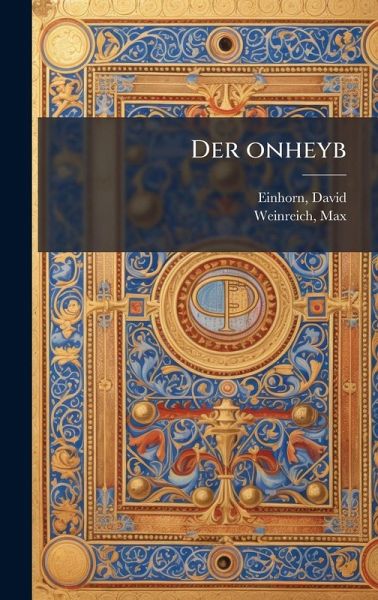
Der onheyb
Versandkostenfrei!
Versandfertig in über 4 Wochen
29,99 €
inkl. MwSt.
Weitere Ausgaben:

PAYBACK Punkte
15 °P sammeln!
Der onheyb: Zamlbukh far lieraur un isnshaf (The Beginning: A Collection for Literature and Scholarship) is a Yiddish-language anthology edited by David Einhorn and Max Weinreich, published in 1922. This important collection showcases Yiddish literature and scholarship from the early 20th century. It offers insights into the cultural and intellectual life of Yiddish-speaking communities during a period of significant social and political change. This volume represents a valuable contribution to the understanding and preservation of Yiddish language and culture, and remains a significant resour...
Der onheyb: Zamlbukh far lieraur un isnshaf (The Beginning: A Collection for Literature and Scholarship) is a Yiddish-language anthology edited by David Einhorn and Max Weinreich, published in 1922. This important collection showcases Yiddish literature and scholarship from the early 20th century. It offers insights into the cultural and intellectual life of Yiddish-speaking communities during a period of significant social and political change. This volume represents a valuable contribution to the understanding and preservation of Yiddish language and culture, and remains a significant resource for scholars and readers interested in Jewish history, literature, and social sciences. The essays and literary contributions reflect the rich intellectual discourse of the time. This work has been selected by scholars as being culturally important, and is part of the knowledge base of civilization as we know it. This work was reproduced from the original artifact, and remains as true to the original work as possible. Therefore, you will see the original copyright references, library stamps (as most of these works have been housed in our most important libraries around the world), and other notations in the work. This work is in the public domain in the United States of America, and possibly other nations. Within the United States, you may freely copy and distribute this work, as no entity (individual or corporate) has a copyright on the body of the work. As a reproduction of a historical artifact, this work may contain missing or blurred pages, poor pictures, errant marks, etc. Scholars believe, and we concur, that this work is important enough to be preserved, reproduced, and made generally available to the public. We appreciate your support of the preservation process, and thank you for being an important part of keeping this knowledge alive and relevant.


